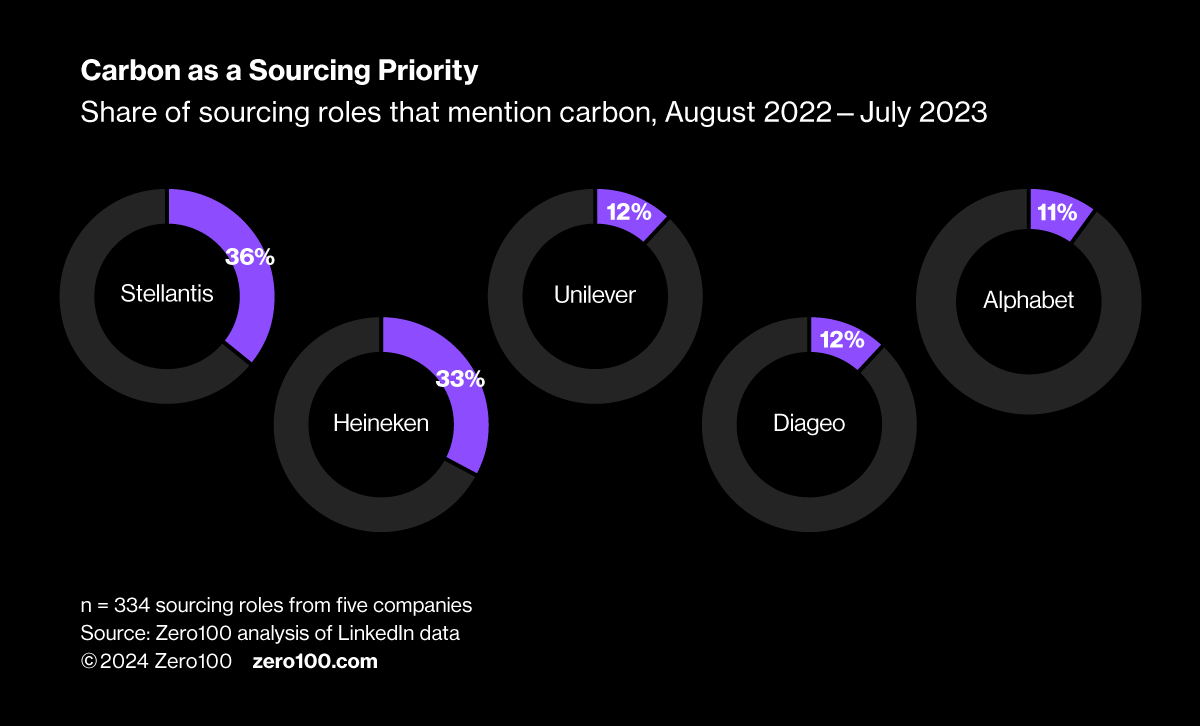

Decarbonize Sourcing to Decarbonize Supply Chains
The sourcing function is responsible for a third of carbon emissions released by supply chain. It can make the difference when it comes to your carbon reduction targets… but only if it attracts the right people for the job. Targeted job descriptions and skills development are crucial to ensure your organization is prepped and ready to accelerate decarbonization.
-
1
Out of the estimated 51 billion tons of global CO2 that are released each year, 33% come from the sourcing function, underlining the substantial effect that improvements in sourcing strategies can have on your overall carbon reduction targets.
-
2
To attract the right talent, some companies are addressing carbon reduction in supply chain roles by adding keywords, such as “carbon accounting” or “decarbonization,” into job descriptions. While 67% of companies specify these keywords within supply chain roles, only 31% do so within sourcing roles.
While nearly half of the companies on the Forbes 200 list have set net zero targets (more than double from December 2020), very few are actually operationalizing decarbonization and reporting substantial progress. A well-known way companies are committing to their reduction goals is through the Science Based Target Initiative, which reviews and approves targets based on their criteria. Our analysis of nearly 200 companies found that, of the 34% of companies that have SBTi Scope 3 targets, only 55% have reported progress, be that positive or negative. To make a dent in targets, we must operationalize decarbonization efforts – which starts with examining emissions across the supply chain.
Approximately 51 billion tons of global CO2 are released each year. Broken down functionally, this looks like: Source, 33% (materials like plastics and metals, animals, crops, land use); Make, 21% (factories, chemical reactions); Move, 11% (warehouses, distribution centers, transportation); Sell, 2% (commercial spaces); and Use, 30% (residential homes, commercial spaces, aviation, road travel). Sourcing makes up the largest portion of the pie – Make, Move, Plan, and Sell are only worth 36%, and Use is second to sourcing at 31%. That said, Use is not the direct responsibility of supply chain – it’s the work of product design/research and development.

Making the reduction of carbon a sourcing priority begins with attracting the right talent. Despite the importance of carbon reduction, only a third of companies mention it anywhere in their sourcing job descriptions. Companies that do specify carbon in some of their sourcing roles include Stellantis, Heineken, Unilever, Diageo, and Alphabet – Stellantis the most, in 36%, and Alphabet at the bottom end, mentioning the term “carbon” the least, in 11% of sourcing roles. To see real progress by addressing carbon within sourcing, job descriptions need to reflect this priority.

The easiest first step is to specify the right terminology when recruiting talent and building a sourcing department filled with people who expect to tackle carbon in their role. Ensure keywords, like “measurement,” “accounting,” “management,” and “strategy,” are included alongside the term “carbon” in sourcing roles.
In addition, aligning your organization’s emissions to functional operations results can help supply chain leaders identify areas of focus and opportunities for partnership. There are three steps you can take immediately to begin addressing carbon in the sourcing function:
- Map your organization’s carbon output by function: Sourcing owns the relationship and buying power with the suppliers, meaning that reducing carbon starts with finding and scaling lower carbon materials and components. Mapping your carbon output by functional area allows your team to more easily prioritize focus areas and investments based on scenario planning and solution provider capabilities.
- Embrace tech to help with tracking and supplier collaboration: Sourcing responsibly requires auditable transparency from upstream suppliers – a task that likely involves tech partners. Technology partners are a part of increasing transparency and optimizing decisions that are about cost savings, time, quality – and carbon.
- Connect with peers and communicate progress: Industry-level collaboration allows you to hold yourself accountable through open communication with your peers and even the public.
To make tangible progress in your journey to net zero, treat sourcing as a competitive advantage rather than just a by-product. Consider additional strategies to advance your sourcing capabilities in relation to carbon and beyond by working with Zero100’s lead sourcing analyst, Lauren Acoba, who focuses on amplifying the impact of sourcing, accelerating the rate of progress, and shaping the future – all the while considering and making use of emerging AI.
To see a different data cut or to dig deeper into this topic, reach out to our Head of Research Analytics, Cody Stack, at Cody.Stack@zero100.com.
Methodology
Zero100’s proprietary data and analytics are a combined effort between our data scientists and research analysts. We provide data-first insights matched with our own research-backed points of view and bring this analysis to life via real-world case examples being led by supply chain practitioners today.
Carbon breakdown by functional area: For this study, we used public carbon footprint and GHG emissions reports’ estimate of 51 billion tons of global CO2 released each year. Using data sources, including OECD, Our World in Data, and IEA, we created a segmented view as to how the 51 billion tons are dispersed throughout our supply chain networks. We aggregated ten different carbon emissions data sources to create a consensus view of emissions within each of the six supply chain functions (Source, Make, Move, Sell, Use, and Regenerate).
Carbon mentions in job posts: For this study, we looked at 2.4 million LinkedIn job posts from 100 B2C companies. Our analysis categorizes listings based on mentions of specific digital skills within job titles and descriptions.
SBTi progress: For this study, we analyzed SBTi data from 177 supply chain organizations and 2.4 million LinkedIn job posts from 100 B2C companies. Our analysis categorizes listings based on mentions of specific digital skills within job titles and descriptions.